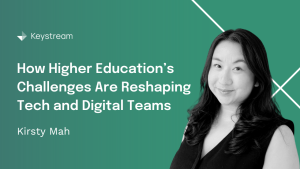30.10.2024
Go-Live is Just the Beginning: Realising the Full Potential of Digital Transformation in the Public Sector
For many organisations in the public sector, the go-live of a new digital solution is celebrated as the end of a long and complex journey. But in reality, reaching this milestone is only halfway. For a digital solution to deliver its true potential, it must be continually refined to align with the daily workflows of its users. The goal is for the technology to empower the workforce, not add another layer of complexity.
Here’s why the real work begins after go-live, and how we can ensure that digital solutions become trusted tools rather than “another system to feed.”
Early Engagement for Long-Term Success
A successful go-live does not start on the launch date; it begins in the early design stages. From the outset, engaging everyone from frontline staff to the executive team is critical to building a solution that genuinely meets organisational needs. By involving the workforce in the design journey, we ensure that the solution is practical and aligns with day-to-day workflows, while also meeting strategic objectives. This collaborative approach creates buy-in across all levels, laying the foundation for a smoother go-live and maximising the system’s potential to add real value from day one.
Embedding into the day-to-day
While go-live marks the solution’s initial deployment, it does not signify the end of the change journey. This milestone signals the start of integrating the system with the organisation’s operational rhythms, embedding it within day-to-day tasks. To truly benefit users, the system must be adaptable, responding to evolving needs and consistently adding value.
Fine-Tuning for Real-World Alignment
Fine Tuning the solution is an integral part of the journey so it can succeed. A successful digital transformation is one where the technology aligns seamlessly with the work it supports. After go-live, it is crucial to fine-tune the system based on real-world feedback, refining features and workflows to better serve users. The aim is to reduce friction and make the solution an enabler—empowering the workforce to work more effectively rather than creating additional administrative burdens.
Promoting Engagement and Trust
For a digital solution to succeed in the public sector, it must be embraced by its users. Building engagement requires ongoing user involvement in the development process. Regular feedback sessions, training updates, and user-focused improvements foster trust and ensure the solution remains intuitive and valuable. When staff see that the system evolves in response to their needs, it shifts from being a mandate to becoming a truly useful tool.
Continuous Monitoring for Long-Term Value
The benefits of a digital solution in the public sector are rarely immediate; they require time and dedicated attention to fully unfold. By tracking key metrics—such as efficiency improvements, reduction in redundant tasks, and staff satisfaction—organisations can assess how well the system aligns with its goals. Continuous monitoring and refinement ensure the solution provides long-term value and remains relevant to the organisation’s changing needs.
Conclusion: Sustainable Transformation Beyond Go-Live
Go-live is an essential milestone, but it’s only the beginning of sustainable change. True transformation happens when a digital solution becomes an integral part of an organisation’s work, adapting and evolving as required. By focusing on user engagement, fine-tuning, and continuous improvement, we can help public sector organisations realise the full benefits of their digital investments.
Achieving this level of transformation requires expertise, which is where our team can help. We’re here to support your organisation from go-live through to sustainable success, ensuring that your digital solutions are not only operational but truly effective.
Ready to take your digital transformation further? Contact us to see how we can support your journey from go-live to lasting impact.

